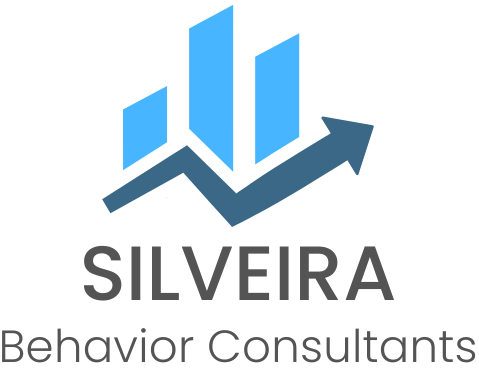The Ultimate Beginner's Guide to the ABA Approach in 2025 (Applied Behavior Analysis)
Imagine unlocking real growth and meaningful change for individuals with autism and developmental disabilities. The ABA approach (Applied Behavior Analysis) is a proven, science-backed method that transforms lives every day by focusing on observable behavior and positive reinforcement.
This beginner's guide gives you everything you need to know about Applied Behavior Analysis, from foundational principles and practical steps to actionable insights for 2025. Discover exactly how the ABA approach works, explore real-world success stories, and learn how to get started with confidence. Let's embark on your ABA journey together and open the door to new possibilities for learning and skill acquisition.
What is ABA? Understanding the Basics of the ABA Approach
Understanding the ABA approach starts with its scientific foundation. Applied Behavior Analysis, or ABA, is a therapy based on the science of learning and behavior. Its roots trace back to the work of B.F. Skinner, a pioneer in operant conditioning, who explored how consequences shape behavior. Early ABA pioneers expanded these ideas, applying them to real-world challenges.
Over the decades, the ABA approach evolved into a leading, evidence-based therapy for autism and developmental disabilities. For example, early intervention programs often use ABA to help young children develop crucial communication and social skills, setting the stage for lifelong growth.

DEFINITION AND ORIGINS OF ABA
The ABA approach (Applied Behavior Analysis) is rooted in the idea that behavior can be observed, measured, and changed. B.F. Skinner’s research in the mid-20th century laid the groundwork by showing how reinforcement and punishment influence actions. Early practitioners, like Dr. Ivar Lovaas, adapted these concepts for children with autism, leading to structured interventions that could dramatically improve skills. Modern ABA uses these scientific principles to design personalized programs, like teaching a child to request a favorite toy through early intervention.
KEY PRINCIPLES OF ABA
At the heart of the ABA approach are several core concepts:
- Reinforcement increases the likelihood of a behavior, while punishment reduces it.
- Extinction involves withholding reinforcement to decrease unwanted actions.
- The ABCs—Antecedent, Behavior, Consequence—help therapists understand what triggers and follows a behavior.
- Data-driven decision making is central, as therapists collect and analyze information to adjust strategies.
In classrooms, for instance, teachers might reinforce a student’s positive behavior with praise, making it more likely to occur again.
EVIDENCE AND EFFECTIVENESS
The ABA approach is supported by decades of research. Studies consistently show that up to $70\%$ of children with autism experience significant improvement with ABA-based interventions. Major organizations, including the CDC and Autism Speaks, endorse ABA as an evidence-based treatment. Real-world examples include children learning to communicate verbally after months of structured sessions. For a deeper dive into the research and principles behind ABA, see this Applied Behavior Analysis (ABA) Overview from Autism Speaks.
COMMON MYTHS AND MISCONCEPTIONS
Despite its proven benefits, the ABA approach is sometimes misunderstood. Some believe it is rigid or lacks compassion, but modern ABA is highly individualized and focuses on ethical, person-centered care. Outdated practices have been replaced by methods that respect each individual’s needs and dignity. For example, today’s ABA programs avoid one-size-fits-all solutions and instead tailor interventions to the person’s strengths and goals, ensuring therapy is both effective and humane.
CORE COMPONENTS AND STRATEGIES OF ABA
Unlocking the true potential of the
ABA approach starts with understanding its essential building blocks. Each component works together to create a powerful, individualized plan that drives lasting change. Let’s break down these core elements and see how they fit into real-world practice.

ASSESSMENT AND GOAL SETTING
The ABA approach begins with a thorough assessment. Tools like the VB-MAPP (Verbal Behavior Milestones Assessment and Placement Program) and ABLLS-R (Assessment of Basic Language and Learning Skills-Revised) help behavior analysts understand each individual’s strengths and skill gaps.
These assessments lead directly to measurable, achievable goals (often following the SMART criteria: Specific, Measurable, Achievable, Relevant, Time-bound). For example, a nonverbal child might have a goal to use picture cards to request favorite items. This ensures the ABA approach is never one-size-fits-all.
- Assessments are ongoing, not just a starting point.
- Goals are specific, observable, and tied to meaningful outcomes.
- Family input shapes priorities and ensures goals are relevant to daily life.
For a deeper look at how these elements come together in practice, explore the ABA therapy services overview.
BEHAVIOR INTERVENTION PLANS (BIPs)
A cornerstone of the ABA approach is developing a clear Behavior Intervention Plan (BIP). These plans target specific challenging behaviors and outline positive replacement skills (functional equivalents).
First, the team identifies which behaviors need support, such as tantrums or self-injury. Then, they conduct a Functional Behavior Assessment (FBA) to determine the why (the function) of the behavior. They then teach alternative skills—like using words or signs instead of acting out—to serve the same function.
- BIPs are personalized for every learner.
- Replacement behaviors are practical and functional.
- Plans include proactive strategies (preventing the behavior) and reactive strategies (responding safely).
For instance, teaching a child to request a break (the replacement behavior) replaces disruptive behavior with communication, making the environment more supportive.
TEACHING TECHNIQUES IN ABA
The ABA approach uses a range of teaching methods to build new skills, chosen based on the skill being taught and the learner's needs:
- Discrete Trial Training (DTT): Breaks learning into small, manageable steps, perfect for teaching foundational skills like eye contact or following instructions in a structured setting.
- Natural Environment Teaching (NET): Brings learning into real-life moments—like practicing greetings during family breakfast—to promote generalization.
- Pivotal Response Training (PRT): Targets foundational areas known as "pivotal responses" (e.g., motivation, self-initiation, responsiveness to multiple cues) to produce broad, collateral changes across many skills.
| Technique | Focus Area | Example |
|---|---|---|
| Discrete Trial Training | Structured learning | Teaching eye contact |
| Natural Environment | Everyday routines | Practicing greetings |
| Pivotal Response | Key developmental skills | Building motivation to speak |
DATA COLLECTION AND PROGRESS MONITORING
A hallmark of the ABA approach is its reliance on data. Teams collect detailed information on behaviors and skill acquisition to track progress over time.
Methods include tally sheets, frequency charts, and digital tools. Regular data review ensures interventions stay effective and responsive to the learner's pace.
- Data guides every decision, taking the guesswork out of therapy.
- Progress is visualized through clear graphs and charts.
- Adjustments are made based on evidence, not assumptions.
For example, tracking how often a child greets peers can reveal steady improvement or signal when strategies need tweaking (e.g., adding more reinforcement or changing the teaching context).
COLLABORATION AND GENERALIZATION
No ABA approach succeeds in isolation. Collaboration with parents, teachers, and other therapists is essential for consistency and success.
Strategies for generalization ensure that skills learned in one setting—like saying "hello" at home—carry over to school and the community.
- Parents participate in sessions and practice skills at home to ensure consistency across environments.
- Teachers reinforce new behaviors in the classroom to promote skill use in educational settings.
- Community outings test skills in real-world situations, validating true generalization.
By working together, everyone helps the individual thrive in every environment.
STEP-BY-STEP GUIDE: HOW TO START WITH ABA IN 2025
Embarking on the journey with the ABA approach can feel overwhelming, but breaking it down into clear, manageable steps makes the process far less daunting. Whether you’re a parent, caregiver, or educator, following this roadmap will help you start strong and set the stage for meaningful progress.

STEP-BY-STEP GUIDE: HOW TO START WITH THE ABA APPROACH IN 2025
Embarking on the journey with the ABA approach can feel overwhelming, but following these clear, manageable steps makes the process far less daunting and sets the stage for meaningful progress.
Step 1: Recognize the Need for ABA
The first step in the ABA approach is identifying when support is necessary. Common signs include:
- Noticeable delays in speaking or understanding language.
- Difficulty forming relationships with peers or making eye contact.
- Persistent problem behaviors such as tantrums or self-injury.
- Struggles to adapt to changes in routine.
Early recognition sets the foundation for timely and targeted intervention. The ABA approach is especially effective for individuals with autism and developmental disabilities.
Step 2: Seek a Qualified ABA Provider
Choosing the right professional is crucial. Look for Board Certified Behavior Analysts (BCBAs) who are experienced, ethical, and dedicated to evidence-based practice.
- Verify credentials through the BACB registry and ask about their experience with similar cases.
- Consider providers who offer transparent communication, involve families, and demonstrate flexibility in service delivery.
For a detailed walkthrough of this process, explore the Getting started with ABA therapy guide. A qualified provider ensures your journey with the ABA approach is safe and effective.
Step 3: Undergo Comprehensive Assessment
Assessment is at the heart of the ABA approach. During intake, expect a combination of interviews, observations, and standardized tools .
Common assessments include:
- VB-MAPP (Verbal Behavior Milestones Assessment)
- ABLLS-R (Assessment of Basic Language and Learning Skills)
- Functional Behavior Assessment (FBA): Used to determine the function (the why) of a challenging behavior.
This thorough process helps pinpoint skill gaps and problematic behaviors, guiding the creation of targeted goals.
Step 4: Develop a Personalized ABA Plan
After assessment, the BCBA crafts an individualized plan. The ABA approach emphasizes setting specific, measurable, and achievable goals based on the assessment data.
Together with your provider, prioritize areas such as:
- Communication (e.g., requesting needs).
- Self-care (e.g., dressing, hygiene).
- Social skills (e.g., sharing, turn-taking).
This plan is a living document—expect regular updates as progress is made and new needs arise. A well-designed plan makes the ABA approach both structured and flexible.
Step 5: Implement Therapy Sessions
Therapy sessions bring the ABA approach to life. Sessions are structured yet engaging, typically lasting $1–3$ hours, depending on the individual’s age and needs.
Key elements include:
- Targeted activities (e.g., games, routines).
- Positive reinforcement (e.g., praise, tokens).
- Active family involvement (parents participate in skill-building routines).
Regular sessions help the ABA approach deliver steady, measurable progress.
Step 6: Monitor Progress and Adjust Interventions
Ongoing monitoring is a hallmark of the ABA approach. Data is collected during every session to track skill acquisition and behavior changes.
- Graphs illustrate growth in key areas.
- Data-driven decisions guide adjustments.
- Strategies are tweaked for optimal results (e.g., increasing session frequency or trying new teaching techniques).
Continuous monitoring ensures the ABA approach remains effective and responsive to the individual's learning pace.
Step 7: Plan for Transition and Maintenance
As milestones are reached, the ABA approach shifts toward promoting independence. This involves fading intensive support and preparing for transitions (e.g., from clinic to school).
Strategies include:
- Gradually reducing session intensity.
- Teaching self-management skills.
- Coordinating with teachers or other professionals.
The goal is to maintain gains and support lifelong learning. A thoughtful transition plan helps the ABA approach create lasting, meaningful change.
REAL-WORLD APPLICATIONS AND SUCCESS STORIES
The ABA approach has moved beyond theory and research, making a profound difference in homes, schools, and communities. Its adaptability means families and professionals can tailor supports to fit each environment.
- At home, routines like morning prep or mealtime are opportunities for skill-building.
- In schools, the ABA approach is integrated into classroom management, helping students follow directions and interact with peers.
- Community settings, such as playgrounds or grocery stores, provide natural chances to practice social and adaptive skills.
If you want to dive deeper into how these methods work in real life, check out the
ABA Techniques and Effectiveness resource for practical examples and insights.

CASE STUDIES: TRANSFORMATIVE OUTCOMES
Families often describe the ABA approach as life-changing. Take Mia, a four-year-old who struggled to communicate her needs. After six months of focused ABA intervention, Mia started using words and simple gestures to express herself, dramatically reducing her frustration and tantrums. Another example is Jake, who learned to follow multi-step instructions at school, significantly boosting his independence and confidence. Real-life stories like these are plentiful, each highlighting the individualized nature of this evidence-based method. For more real-world case studies and family experiences, explore these ABA-related blog articles.
ABA FOR DIFFERENT AGE GROUPS
The ABA approach is effective across the lifespan, from toddlers to adults. While early intervention remains a cornerstone, support does not stop in childhood.
For toddlers, programs often focus on communication and play. School-age children may work on academic skills or making friends. Teens benefit from social skills training and self-advocacy, while adults can improve daily living skills or employment readiness.
| Age Group | Focus Areas |
|---|---|
| Toddlers | Communication, Play |
| School-age | Academics, Social Skills |
| Teens | Friendship, Self-Advocacy |
| Adults | Independence, Work Skills |
ADDRESSING CHALLENGING BEHAVIORS
Challenging behaviors such as aggression, self-injury, or noncompliance can be overwhelming for families. The ABA approach uses positive, proactive strategies to identify the reasons behind these behaviors (the function) and replace them with safer, more effective skills.
For instance, teaching a child to request a break instead of engaging in self-injury can dramatically improve quality of life by addressing the underlying need for escape. Ongoing assessment and adjustment (via the FBA and BIP) keep interventions relevant and compassionate.
INTEGRATING ABA WITH OTHER THERAPIES
Collaboration is a hallmark of the ABA approach. ABA professionals often work alongside speech-language pathologists (SLPs), occupational therapists (OTs), and physical therapists (PTs) to create unified, multidisciplinary treatment plans.
For example, a team might set joint goals for language development and motor skills, ensuring progress is holistic and meaningful. This integrated approach maximizes each child's potential, fostering growth in every area of life.
CHOOSING THE RIGHT ABA PROVIDER: WHAT TO LOOK FOR
Selecting the right provider is a crucial step in your ABA approach journey. The right team will ensure your loved one receives effective, compassionate, and individualized support. Here’s what you should consider as you evaluate options.
CHOOSING THE RIGHT ABA PROVIDER: WHAT TO LOOK FOR
Selecting the right provider is a crucial step in your ABA approach journey. The right team will ensure your loved one receives effective, compassionate, and individualized support.
Credentials and Experience
When starting with the ABA approach, always verify that your provider employs certified professionals.
- Look for Board Certified Behavior Analysts (BCBAs) and Registered Behavior Technicians (RBTs) with proven experience.
- It's important to understand the specific responsibilities and ethical standards each role brings. To learn more about how BCBAs shape effective interventions, see the Role of Board Certified Behavior Analyst.
- Ask providers about their training, ongoing education, and track record with similar cases. A transparent provider welcomes questions about credentials and shares success stories.
Individualization and Cultural Sensitivity
A high-quality ABA approach is never one-size-fits-all. The best providers tailor every program to the individual’s strengths, needs, and cultural background.
- During your search, ask how goals are set and adjusted for family values, language, and traditions.
- Multicultural considerations—like incorporating bilingual staff or culturally relevant reinforcers—can make a significant difference in engagement and outcomes.
- For a deeper look at how programs are adapted for each individual, you might explore this overview on Understanding ABA Therapy.
Family Involvement and Training
Family participation is central to the success of any ABA approach. Top providers offer ongoing parent and caregiver training, empowering families to reinforce new skills at home and in the community.
- Look for regular workshops, hands-on sessions, and clear communication about progress.
- Effective providers view parents as partners, not bystanders, and equip them with practical tools for everyday situations.
Service Delivery Options
Flexibility in service delivery is essential for the ABA approach to fit seamlessly into your routine. Providers may offer:
- In-home services
- Clinic-based services
- School-based services
- Community services
Hybrid models, which combine different settings, can boost convenience and skill generalization. Ask about scheduling, location options, and how transitions between environments are supported.
Below is a quick table to help you compare providers:
| Criteria | What to Look For |
|---|---|
| Credentials | BCBA/RBT certification, experience |
| Individualization | Tailored goals, cultural sensitivity |
| Family Involvement | Parent training, open communication |
| Service Options | Flexible locations, hybrid models |
Choosing the right partner for your ABA approach will ensure lasting progress and positive experiences for your family.
Now that you have a solid understanding of how ABA works and how transformative it can be for individuals and families, you might be wondering what your next step should be. The journey to growth and independence starts with finding the right support tailored to your unique needs.
At Silveira Behavior Consultants, we’re here to help you every step of the way—whether you’re just starting out or looking to enhance your current plan. If you’re ready to explore how personalized ABA therapy can make a difference, Inquire About Services—we’d love to hear your story and answer your questions.





